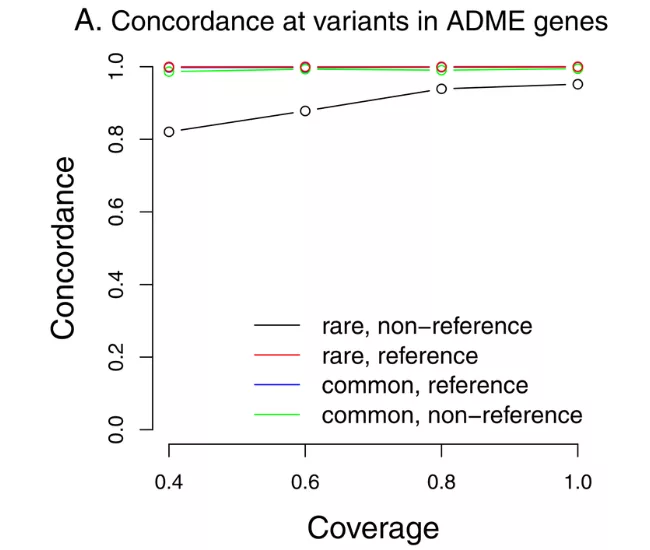The tools available to scientists and clinicians in the field of genetics are evolving rapidly. While genotyping microarrays once dominated the field, next-generation sequencing (NGS) technologies are becoming increasingly popular. This is particularly true among researchers studying pharmacogenomics (PGx). In recent years, the number of variants linked to an altered drug response has grown rapidly and consequently put a spotlight on the critical failings of microarrays1,2.
In this blog, we highlight recent data comparing the performance of microarray technology with either low-pass whole genome sequencing (lpWGS) on its own or in combination with a target enrichment sequencing panel.
Low-pass sequencing vs genotyping arrays: Fundamental differences
Genotyping microarrays are a relatively fast and low-cost technology that enable researchers to probe samples for specific, pre-defined DNA sequences (often ranging from 500,000 to 2,000,000 variants)3. In PGx, microarrays are typically built to detect common variants that have a known effect on drug response.
Though cost-effective, microarrays offer narrow and incomplete coverage across many clinically relevant loci, and are only capable of providing data for a predefined set of variants. This means if researchers wish to analyze new variants, a new array must be designed, ordered, and samples re-processed, resulting in a significant practical barrier to research in a rapidly evolving field. Additionally, as genetic studies have predominantly focused on individuals of European descent, arrays built for common PGx variants are likely to be biased towards these populations, reducing the array’s overall effectiveness, and further exacerbating health disparities in genomic research4,5.
